Summer in the woods can be a relaxing experience. The thick green canopy protects from the harshest of the sun’s rays and provides cover for the small birds while they shed and regrow their flight feathers. Shafts of sunlight highlight an array of winged insects dancing on the lightest breeze. There is the distant mewling call of buzzards soaring above the trees in an azure sky.
But in all this serenity after the frenetic wildlife activity of spring, it can be easy to overlook the excitement of new life concealed in the shadows. If it hadn’t been for my thermal imaging monocular, I would have undoubtedly missed my first opportunity to see the new faces on my local patch – twin roe deer babies.
Since my first encounter with this year’s kids, I’ve spent every daily lunchtime stroll looking out for them. It hasn’t been easy. We haven’t had much summer in Glasgow, and the pretty wild weather has made for tricky conditions in the woods. It’s hard to spot anything when all the vegetation is blowing wildly about, and this is exacerbated when the difference between light and shade is at its most extreme. I’ve relied almost completely on the thermal monocular to pick out the understandably flighty deer in these conditions. It’s been easiest, obviously, on the cooler, rainy days when the contrast in temperatures has meant that the deer give off clear heat signatures. Warm days have been harder, as the vegetation warms up and the body heat of the deer doesn’t stand out as clearly. But in all conditions, using thermal imaging has meant that all my encounters with the new kids have happened with zero disturbance caused to them or their mother. I have been able to scope out the best way to get decent views of them without affecting their behaviour, and it’s been a delight to watch them explore and interact.
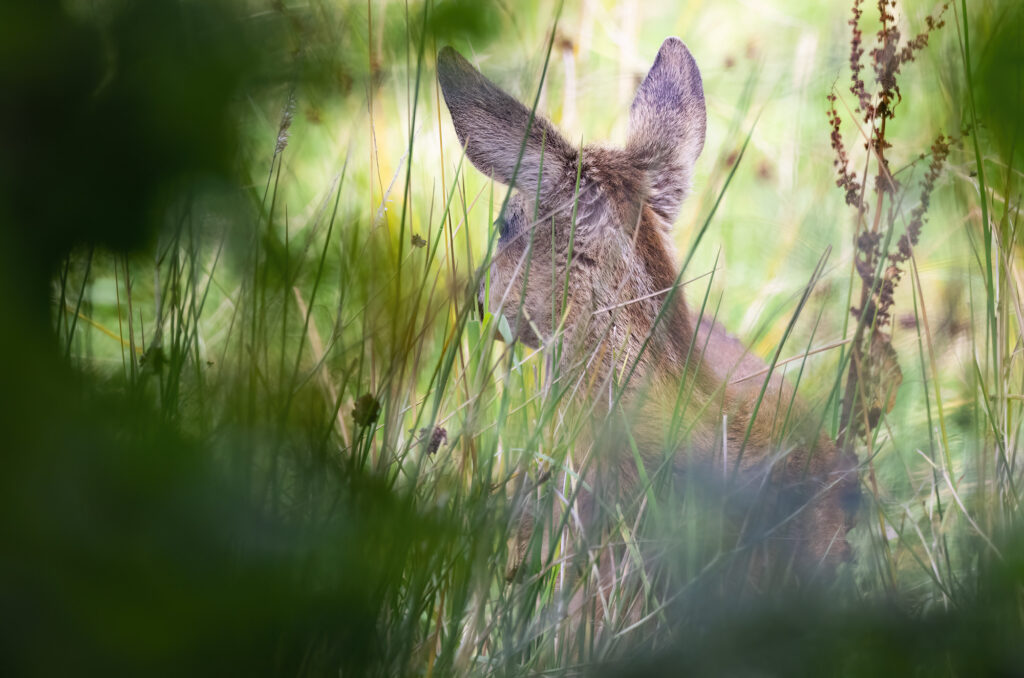
I should point out that these encounters aren’t always perfect from a photography point of view. Once I’ve got into a position to photograph the family, I am rarely able to adjust it much, as I risk disturbing them. This can lead to me being in an elevated spot when I’d rather have a lower perspective, or shooting through vegetation when I’d prefer an unobstructed view. Over the past couple of years, I’ve learnt to accept these imperfections and try to see them as opportunities to capture something a bit different.
An example was the encounter in the image below, where I had an incredible view of the twins as they made their way across the wood. The slight downside was that I was standing halfway up a slope next to a tree – meaning that it was impossible to get the eye-level view of the youngsters I wanted when they stepped into gaps between the trees. However, because I remained completely still and didn’t try to shift my position, I captured them browsing without them noticing me. The only time they glanced over in my direction was when a conker fell from the tree and hit me on the head. I managed to suppress a yelp but the thud when it hit the ground was quite loud. Luckily, a breeze stirred the branches around me, giving me some cover, and the kids soon relaxed again.
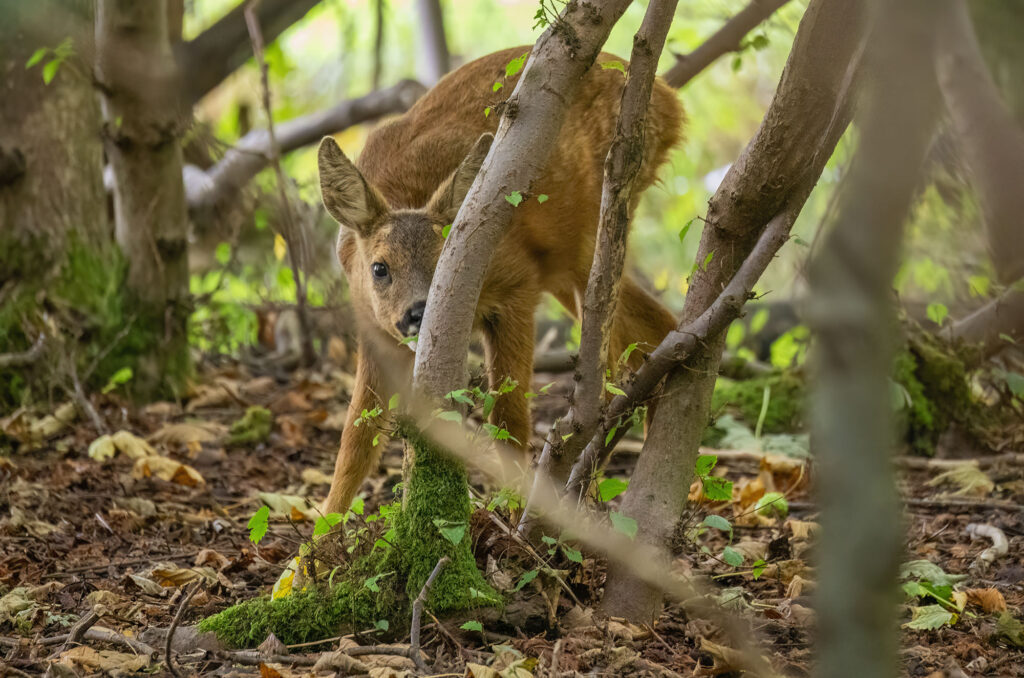
Another example of using a restricted position to my advantage came when I had the privilege of watching the kids moving through the long grass with their mother, Gamma. I was standing at the edge of the woods next to a tree and any movement from me would have undoubtedly caught Gamma’s attention, so I had to stay completely still. I timed moving the camera with the swaying branches, which ensured I remained camouflaged. While I held my breath, Gamma began to groom one of the kids before walking further into the field of long grass – and I captured that moment.
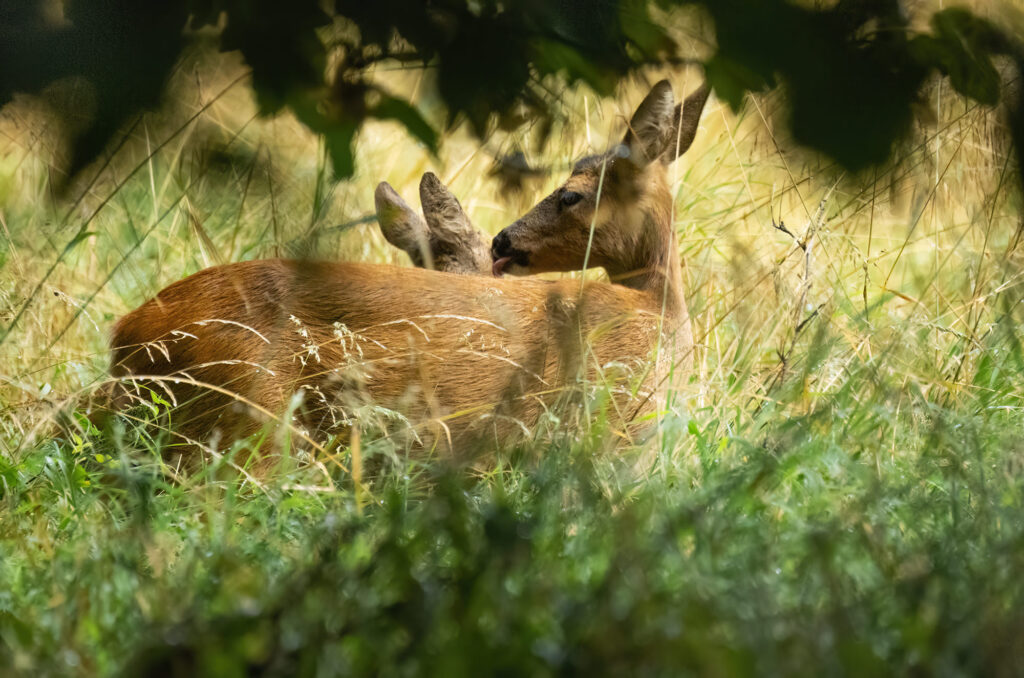
When you’re trying not to disturb wildlife, it’s important to remember that your exit has to be as careful as your approach. There’s little point in remaining undetected by your subject while you’re photographing them, only to scare them when you go to leave. Taking your time is key. When I captured the footage below, I took as long moving away as I’d taken to get into the position to capture the images and video of the roe baby munching and dozing in the sun. I double-checked when back on the main path and a good distance from the family and they hadn’t moved or changed their behaviour. Another success. In this instance, the deer were on an upward slope so I could shoot from a worm’s eye view without lying on the ground – always a bonus. The only downside was the amount of flies in the air – I didn’t have time to switch to manual focus, so all the insects dancing about in front of my lens caused the auto focus to jump around a bit during the video. Nothing is perfect and that’s certainly true when it comes to my video recording skills – it’s often an afterthought when I’m photographing my subject.
As August draws to a close, the kids are growing fast and Gamma is comfortable taking them out into the fields, away from the shelter of the long grass and the trees. So, I can now expect more opportunities to photograph them interacting in the open, as shown in the images below.
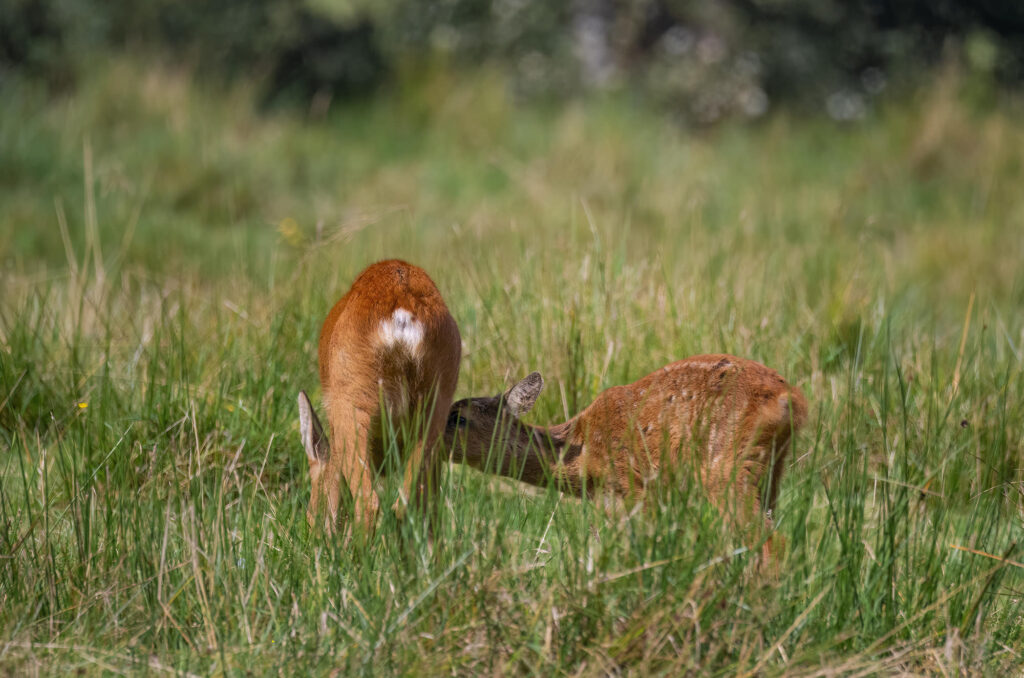
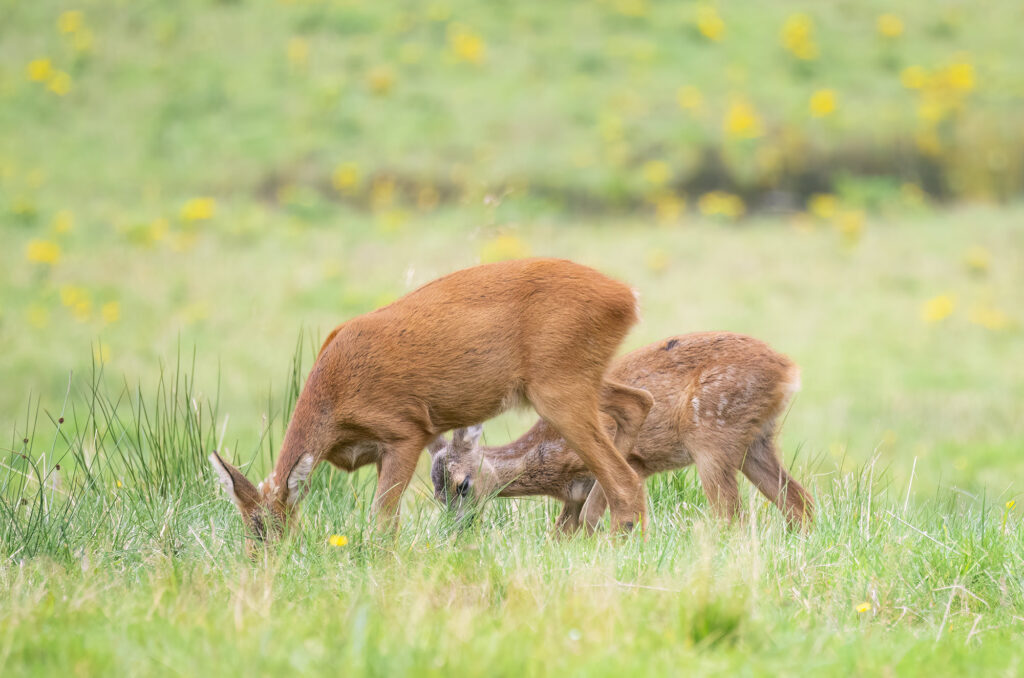
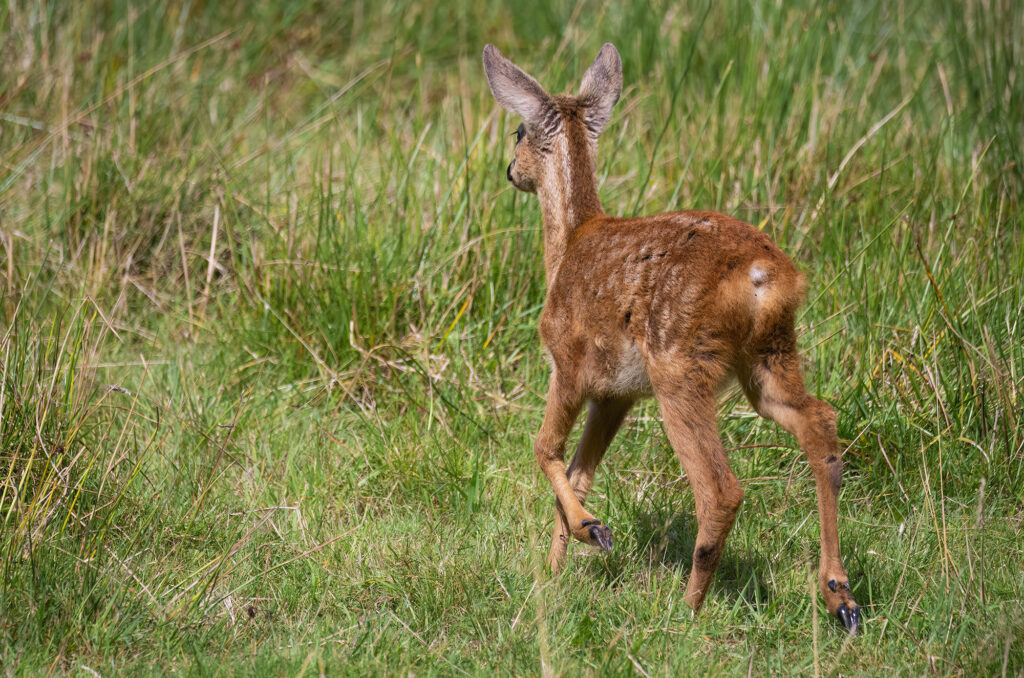
Every encounter with this young family is unique – presenting different challenges and opportunities. However, two aspects are always the same: I’m delighted to spend time with the new kids on the block and elated that I can do so without disturbing them. My summer in the woods hasn’t exactly been relaxing, but it has been rewarding.

